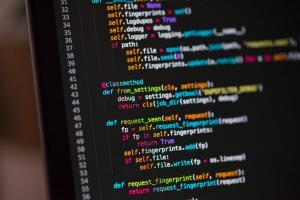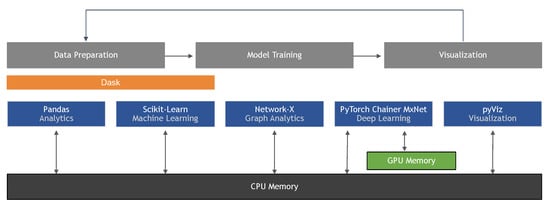
Introduction to Python
Python, the versatile programming language, has gained immense popularity in coding. Its simplicity, readability, and vast capabilities make it the go-to language for various applications.
What is Python and its popularity in the programming world
Python is an open-source, high-level programming language known for its elegant syntax and easy-to-understand code structure. It was created by Guido van Rossum in 1991 and has since become one of the most widely used languages worldwide. Python’s popularity can be attributed to several factors, including:
- Beginner-Friendly: Python’s simple syntax makes it accessible even for novice programmers, enabling them to quickly grasp the fundamentals and start coding.
- Versatility: Python can be used for web development, data analysis, artificial intelligence, machine learning, automation, game development, and much more. Its extensive library ecosystem provides pre-existing modules for various tasks, saving time and effort.
- Community Support: Python has a vast community of developers who actively contribute to open-source projects, offer support through forums and websites, and continuously enhance the language.
Benefits of using Python for various applications
Python offers numerous advantages that make it an ideal choice for different applications:
- Simplicity: Python’s readable syntax makes writing and understanding code easier, reducing development time and increasing productivity.
- Flexibility: Python supports multiple programming paradigms, including procedural, object-oriented, and functional programming. This flexibility allows developers to choose the most suitable approach for their projects.
- Scalability: With its ability to handle large datasets and efficient memory management, Python is highly scalable for both small-scale scripts and complex enterprise applications.
- Integration: Python can seamlessly integrate with other languages and tools, making it a valuable asset in diverse tech ecosystems.
Overview of Python’s flexibility and its use in various domains
Python’s flexibility stems from its simplicity and readability, allowing developers to write clean and concise code. Its object-oriented nature makes it easy to define and manipulate objects, making it suitable for both small scripts and large-scale projects. Additionally, Python supports various programming paradigms, including procedural, functional, and imperative programming.
Examples of industries and applications where Python is widely used
Python finds applications in a wide range of industries due to its versatility. It is extensively utilized in web development, data analysis, scientific computing, artificial intelligence, machine learning, and automation. Companies such as Google, NASA, Facebook, and Netflix rely on Python for their critical operations.
In the web development domain, frameworks like Django and Flask have made Python an excellent choice for building robust and scalable web applications. In data analysis and scientific computing, Python’s libraries such as NumPy, Pandas, and Matplotlib provide powerful tools for data manipulation, analysis, and visualization.
Python’s simplicity and extensive library ecosystem make it an attractive option for machine learning and artificial intelligence tasks. Libraries like TensorFlow, PyTorch, scikit-learn, and Keras provide efficient tools for building intelligent systems and deep learning models.
Overall, Python’s versatility and wide-ranging applications make it an indispensable tool for developers across various domains. Its ease of use and abundance of resources continue to attract businesses and individuals alike.

Python syntax and structure
Python’s syntax is clean and easy to understand, making it an ideal language for beginners. It uses indentation rather than traditional braces or keywords to define blocks of code. This promotes readable and structured code, reducing the chances of errors. Additionally, Python offers a wide range of built-in data types and structures, such as lists, dictionaries, and tuples, providing flexibility in programming.
Overview of key language features such as dynamic typing and garbage collection
One of Python’s notable features is its dynamic typing, allowing variables to be assigned without explicitly declaring their type. This makes code writing faster and more flexible. Furthermore, Python incorporates automatic garbage collection, relieving developers from memory management responsibilities. The interpreter automatically deallocates memory for objects that are no longer in use.
Python’s extensive libraries and frameworks make it a versatile language capable of easily handling various programming tasks. From building web applications using frameworks like Django and Flask to analyzing data using libraries like NumPy and Pandas, Python offers a comprehensive toolset for developers.

Python Libraries and Frameworks
Python’s strength lies in its vast collection of libraries and frameworks that cater to different requirements. These libraries and frameworks provide pre-written code and functionalities, saving developers time and effort. Some popular examples include:
- Data Analysis: Python libraries such as pandas, NumPy, and matplotlib offer powerful tools for data manipulation, analysis, and visualization.
- Web Development: Django and Flask are widely used Python frameworks for building web applications. They provide efficient routing, database integration, user authentication, and many other features.
- Machine Learning: Python’s scikit-learn library offers a robust set of tools for machine learning tasks such as classification, regression, clustering, and more. TensorFlow and PyTorch are other popular libraries used for deep learning.
- Automation: Libraries like Selenium and Beautiful Soup allow developers to automate web scraping or browser automation tasks.
These are just a few examples of the extensive Python ecosystem. With many libraries available, developers can find the right tools to solve various problems efficiently.
Python’s Community and Support
Python boasts a strong, vibrant community that continually contributes to its growth and development. The Python Software Foundation (PSF) and countless volunteers and contributors worldwide ensure that Python remains up-to-date and relevant. This community-driven approach means constant updates, bug fixes, and new features to enhance the language.
Overview of Python’s strong community and vibrant ecosystem
The Python community offers an expansive ecosystem of libraries, frameworks, and tools that cover almost every imaginable use case. Whether you’re building a web application, analyzing data, or developing machine learning models, there’s a Python package that can help you achieve your goals efficiently.
Resources for learning Python, online communities, and support channels
Learning Python has always been challenging thanks to the plethora of resources available. From online tutorials and documentation to interactive coding platforms and video courses, aspiring Python programmers have many options. Additionally, the vibrant online communities such as Stack Overflow and Reddit provide a supportive environment where programmers can seek guidance and share knowledge.
In summary, whether you’re a beginner or an experienced developer, Python’s community and support make it an ideal choice for any programming project. Its versatility and extensive library support ensure that you’re equipped with the right tools to tackle any task efficiently.
Python’s Role in Data Science and Machine Learning
Python has gained immense popularity in data science and machine learning due to its versatility and powerful capabilities. It has become the go-to programming language for data analysts, statisticians, and machine learning engineers.
Python’s significance in data science and machine learning
Python’s simplicity and ease of use make it an ideal choice for beginners in data science. The syntax is clean and readable, allowing users to focus more on solving complex problems rather than worrying about code complexity. Additionally, Python has a vast ecosystem of libraries and frameworks that support various functionalities in data science and machine learning.
Popular libraries and tools for data manipulation, analysis, and modeling
Python offers a wide range of libraries that have become essential tools for data manipulation, analysis, and modeling. Some of the popular libraries include:
- Pandas: A powerful library for data manipulation and analysis.
- NumPy: A fundamental package for scientific computing with Python.
- SciPy: A library for scientific and technical computing.
- scikit-learn: A machine learning library that provides various algorithms for classification, regression, clustering, and more.
- TensorFlow: An open-source machine learning framework developed by Google.
These libraries, along with many others, enable users to analyse data, visualize data, build machine learning models, and deploy them in real-world applications. Python is a very powerful and widely supported programming language for data science and machine learning.

Python for Web Development and Automation
Python has gained immense popularity in the world of web development. Its simplicity, readability, and extensive library support make it an ideal choice for building websites and web applications. Python’s ease of use lets developers quickly prototype ideas and create robust web solutions.
Overview of web frameworks like Django and Flask, and tools for automation
Python offers a range of frameworks that simplify web development. Two popular frameworks include Django and Flask. Django is a high-level web framework that follows the model-view-controller (MVC) architectural pattern, providing developers with a structured approach to building web applications. On the other hand, Flask is a lightweight framework that focuses on simplicity and flexibility.
Apart from web development, Python excels in automation tasks. Its scripting capabilities make it an excellent choice for automating repetitive tasks and creating efficient workflows. Python’s extensive library ecosystem provides tools for automation in various domains, including network administration, system monitoring, data analysis, and more.

Future Trends and Development in Python
Discussion on the future of Python and emerging trends
Python has emerged as one of the most versatile and widely used programming languages. Its simplicity, readability, and adaptability have made it a favorite among developers across various industries. As technology continues to evolve, the future of Python looks promising with a range of emerging trends and developments.
Introduction to Python enhancements and advancements in recent and upcoming versions
In recent years, Python has undergone significant enhancements and advancements. The release of Python 3.x marked a major milestone in the language’s evolution, introducing numerous improvements and new features. From enhanced support for asynchronous programming with async/await syntax to improved type hinting capabilities, Python has become more efficient and powerful.
Looking ahead, the upcoming versions of Python are set to bring even more exciting enhancements. PEP 572 and PEP 585 are Python projects that aim to simplify coding and improve type checking.
Moreover, Python’s versatility extends into various domains such as data science, machine learning, and web development. With libraries like NumPy, Pandas, TensorFlow, and Django, Python offers powerful tools for these fields. As technology advances and new challenges arise, Python continues to adapt and evolve to meet the changing needs of developers.
In conclusion, Python remains the Swiss Army Knife of programming languages, providing developers with a wide range of tools and capabilities. Its future is bright with ongoing enhancements and emerging trends that position it as a versatile language for various applications.

Conclusion
In conclusion, Python deserves the title “The Swiss Army Knife of Programming Languages.” Its versatility and usefulness have made it popular among programmers of various backgrounds. Let’s recap the key points covered in this blog post:
Recap of Python’s versatility and usefulness
- Python is known for its simple and readable syntax, making it easy to learn and understand for beginners.
- It offers a wide range of libraries, frameworks, and tools that make development faster and more efficient.
- Python can be used for web development, data analysis, artificial intelligence, machine learning, and more.
- It has multi-paradigm support, allowing programmers to use different programming styles based on their needs.
- Python has a large and active community that provides support, resources, and constant updates.
Summary of key points covered in the blog post
- Python is a versatile programming language used for various purposes.
- Its simplicity and readability make it a favorite among beginners and experienced developers.
- Python offers a plethora of libraries and frameworks that enhance productivity.
- Its multi-paradigm approach allows flexibility in programming styles.
- Python’s large community provides excellent support and resources.
In conclusion, if you are looking for a programming language that can easily handle diverse tasks, Python is definitely the way to go. Its extensive capabilities and strong community support make it an invaluable tool for any developer.




